OK…who knows what’s wrong with the door in this photo, sent in by Jeff Tock of Ingersoll Rand Security Technologies?
Here are a couple more sent by Jeff. The second one is obvious, but can you tell what’s wrong with the first one?
This exit lock was the height of technology back in the early 1950’s (here’s the patent), and Matt Beckensto of Taylor Cotton Ridley Inc. found one still in use in a Florida hospital. I have seen them locally at Harvard.
Darren Patton of Isenhour Door sent me this one…I definitely won’t be putting it in my “beautiful door” file! That looks like a sad case of door abuse to me! Citizen’s Arrest!!!
A few weeks ago I worked on a code presentation with Marc Zolner, who is the Operations Controller – Americas for Ingersoll Rand Security Technologies. He was teaching his staff about codes, which of course I thought was incredibly cool! Since then, he has sent me several photos of code issues he’s seen…I may have to deputize him!
First, a blocked exit…and can you see any other problems?
And second, a pretty common sight in hotels – a corridor closed off with a curtain, with a blocked exit route behind it!
I still have MORE reader photos to post – I think I’ll just keep going until I’m done with my spring cleaning. Have a great Memorial Day weekend and keep your eyes peeled for doors of interest!
You need to login or register to bookmark/favorite this content.


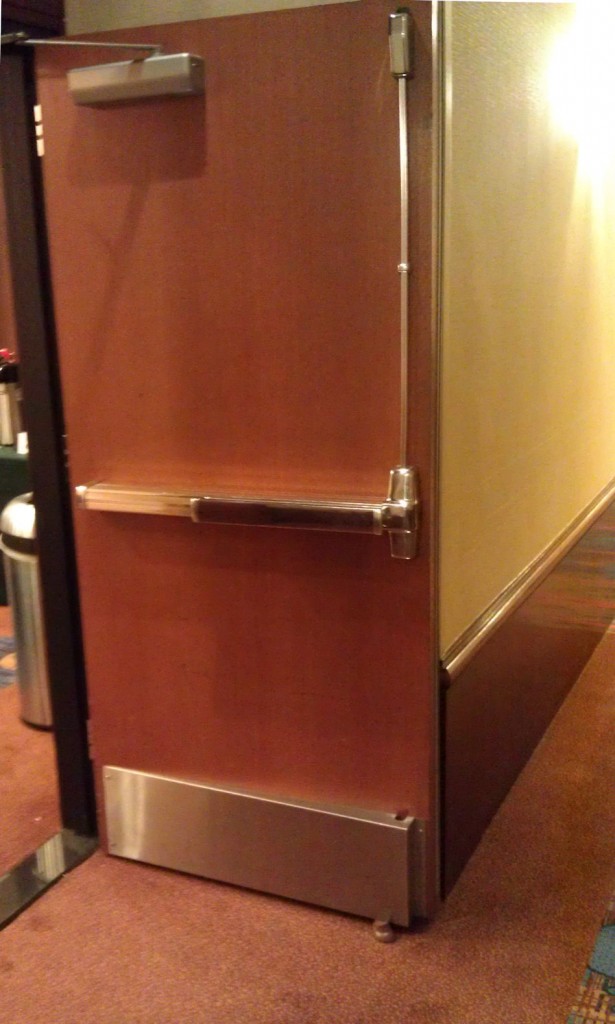

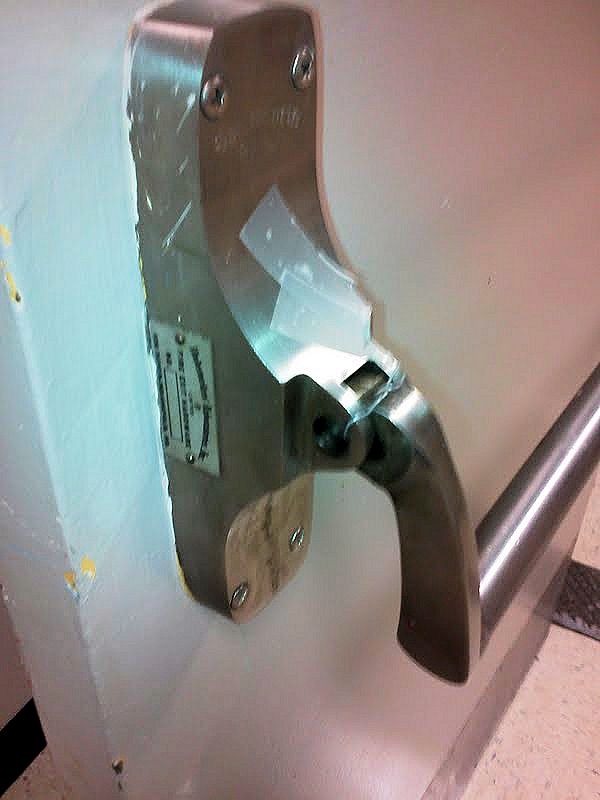

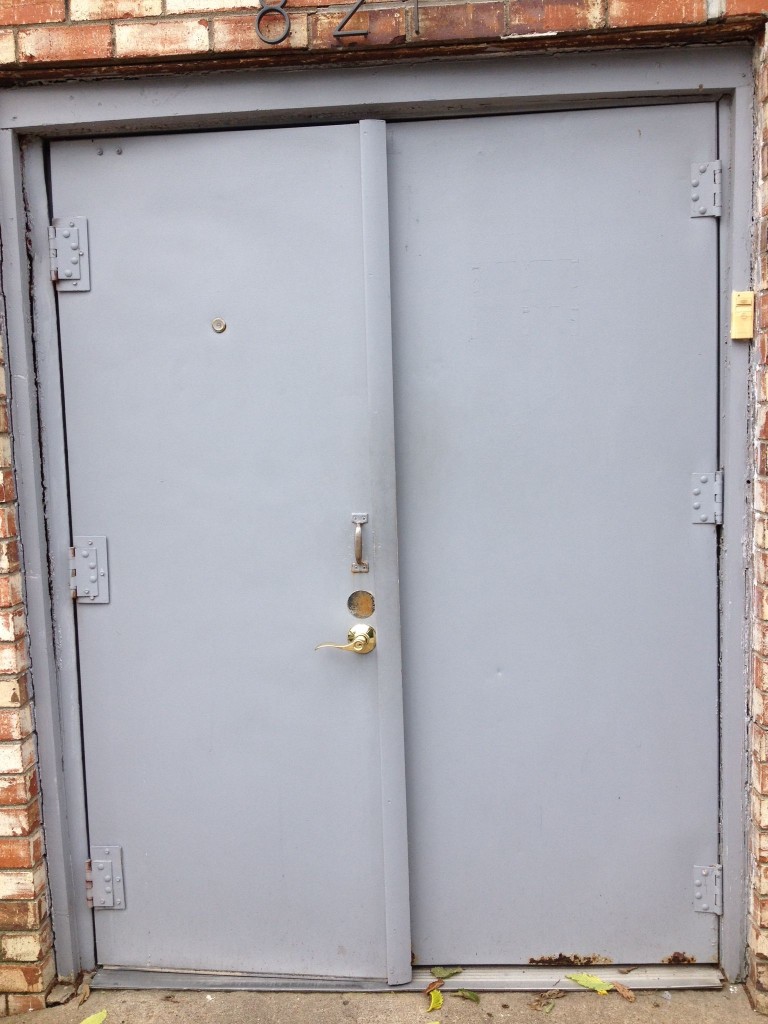
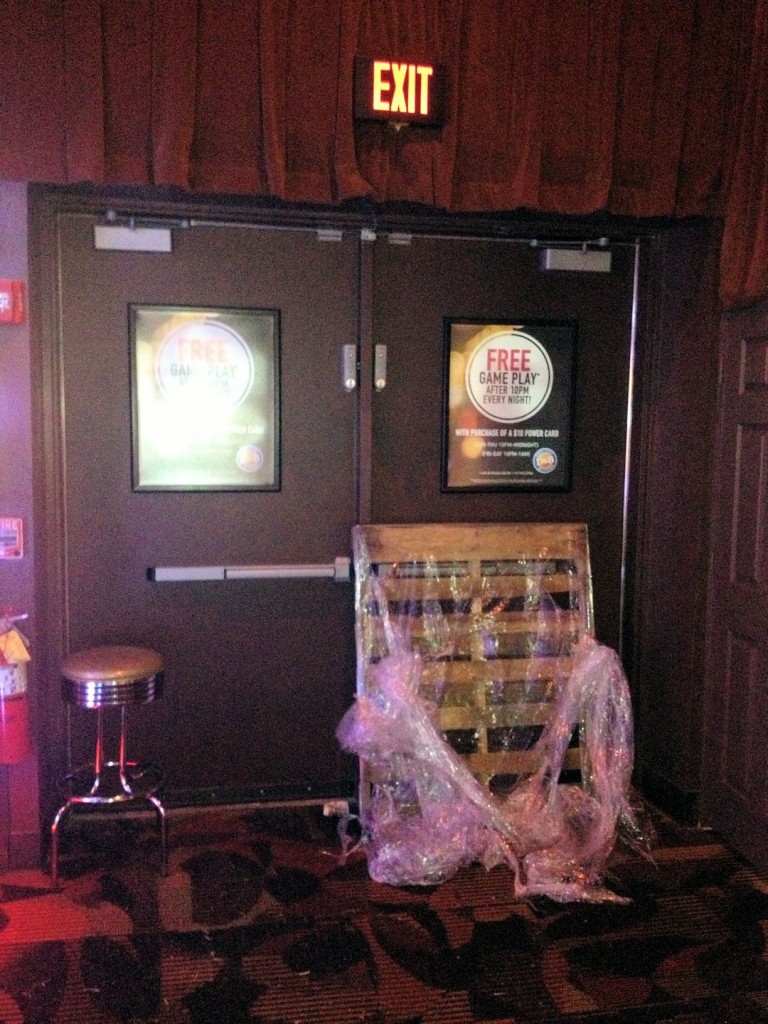
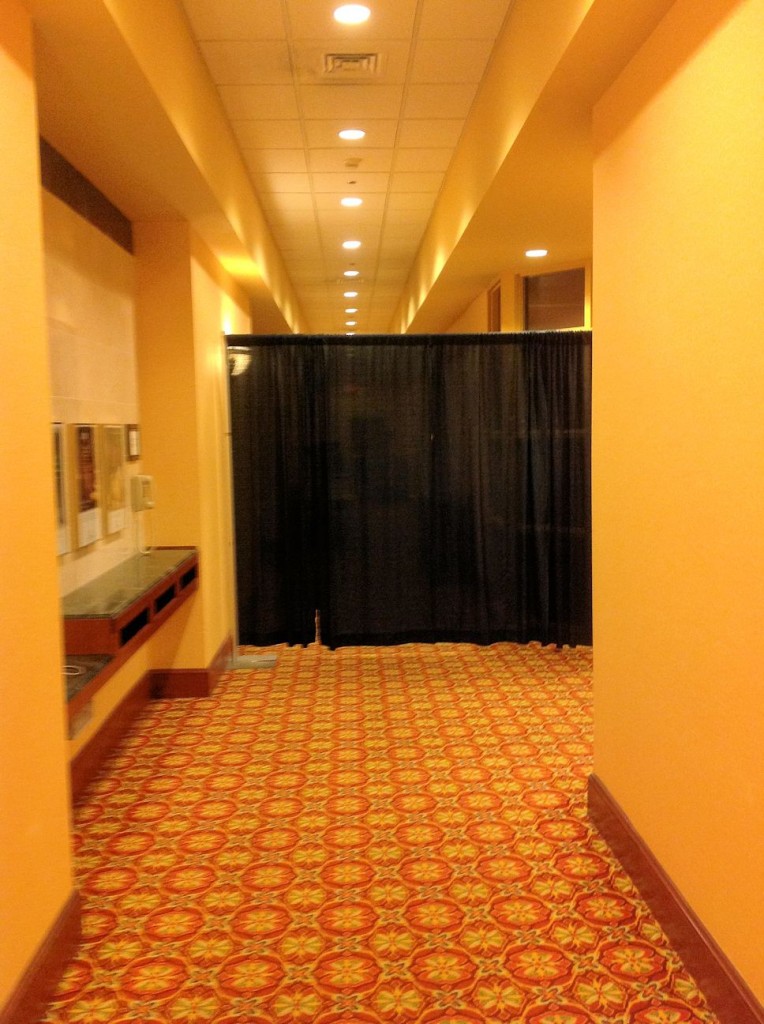
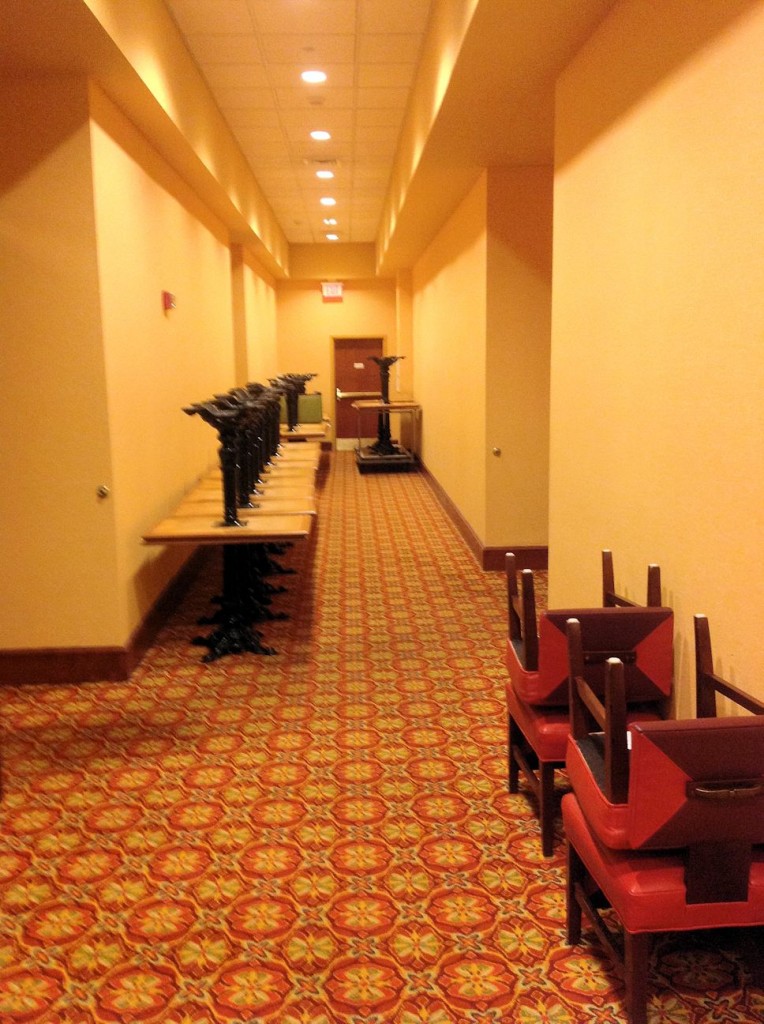
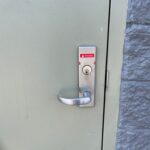

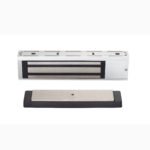

My assumption is that the top door is missing the bottom rod and it has a wedge holding it open and no fire pin is installed.
That being said I am assuming the door needs to be fire rated at a level requiring what I stated.
What’s the purpose of the stainless steel object at the bottom of the door?
Bottom rod has been removed in first photo.
Storefront doors: the exit device overlaps the stile. I hope they dog these?
You’re right – the touch sense bar slid and overlaps the other door. On the first photo, they have an extended latch guard for accessibility, but no bottom rod or latch so it’s not necessary.
hello Lori,
first photo, missing bottom rod,
second one one of the pushbars is too long and touching the pushbar on other door (i see no rods, these must be CVR’s??)
3rd, i have seen this one too many times when i was in technical school, its a result of a worn pivot pin in the crossbar not something a simple nut and bolt can’t fix, if its too worn, may be time to upgrade the exit device, looks like someone tried to fix it in the past (the tape on other side of the pivot, possibly to hold the pin from coming out)
4th photo, nice old schooler fire alarm!! looks to me something is missing from the bottom of it, maybe a reset key or handle??
5th, poor doors!! what a shame!! someone needs to call the door police to catch the culprit! (hey, do you have an LCN badge??(from off an old potbelly closer)
6th photo (blocked fire exit doors) i see the problem, the push pad of panic exit bar has to be longer, at least more then half the width of the door (4 foot wide door?) looks like its from a eat n play arcade type of place (will not say the name)
7th, it seems that is common due to the hotels thinking exit doors are unsightly and draw attention away from the environment so they hide the exit doors (and the hardware) to make things look more presentable to the big shots who are eating/watching a presentation there.
-Jess the door closer doctor
Hi Jess –
Do you see anything else funky about the first photo?
– Lori
wedged kick plate on bottom (for ADA) and it’s held open with a rubber doorstop.
if wondering about door closer, that is NOT made by IR, and that brand this one is, (product of ASSA ABLOY) the pinion shaft is farther away from hinge,
-Jess
If it’s a fire door, the bottom rod is missing and the door is not equipped with an auxiliary fire latch which I believe would eliminate the need for the bottom rod. The door protector plate would be in conflict with a bottom rod and the door is wed open.
That protector plate is designed to slope across and over the bottom rod and latch to provide a smooth surface as required for accessibility, but there’s no bottom rod or latch! 🙂
The “LBR” function appears to be a field modification 😉
P.S. – Up until about three years ago, some of the staff housing apartment buildings in the facility I worked in had those wind-up Best “Break Glass To Exit” exit alarm locks on their roof doors. And if you think that’s medieval, It gets worse. There was an emergency exit from a stairwell that had a glass jar mounted over the doorknob, with a small glass-break hammer hanging from a chain next to it. Thankfully, those doors and their hardware eventually got upgraded to modern standards.
I forgot to add that the door in picture 1 is chocked open.
And also it has an extended rod/latch guard going across the bottom with no rod or latch. 😀
I would give my 3rd kid to see a photo of that jar! Well, maybe not my kid but how about the dog? 😀
The first picture appears to be a fire rated door that is blocked open. Judging by the hole in the bottom rod guard it looks like the bottom rod has been removed from the exit device.
The second picture looks like the left hand door will not open because the exit device overlaps the right hand door. How did they do that?
What’s the purpose of the bottom rod/latch guard? 🙂
On the second photo, the touch sense bar came lose and slid sideways.
Well I figured the device originally had bottom rods. After looking at the door a little more closely I see there are no holes for the bottom rod guides. Should have just used kickplates. Rod guards are just a tad bit more expensive!!
That isn’t a wedge below the missing bottom rod is it? Who would think of such a thing. Sorry but the 1st of the 2 still has me but I love the baggie tie hinge. Is the tape to hold everything else together or to put a sign on the door for a future WW.
OK, I waited long enough. I wanted to give others a chance before an IR guy chimed in. Overall, everyone pegged the issues pretty good. Jess was the onlt one who commented on photo #3. While she was correct with her assumption regarding the issue, I must disagree with her solution. The picture shows an 88 series Von Duprin exit device with the lever arm being held on by a thin wire. The lever arm axel is missing. While a nut and bolt seem to be an easy fix, it;s not the proper part to put the assembly back together. Has anyone thought about the fact that without using the correct part, the UL fire rating on the device may no longer be any good? I doubt the cerification was given using a nut and bolt.
Just practicing to be an FDAI.
Andy,
about the pushbar “fix” i am aware that it needs a pin to properly fix the problem, but a nut and bolt is good for TEMPORARY fix until the pin can be replaced with new pin.
as for the wire, actually didn’t notice it the first time, thanks for pointing it out.
as for FDAI and IR, you work for ingersoll rand?? specifications consultant/AHC? cool
-Jess the door closer doctor
My take on the doors :
1- Specified: Accessible pair egress door, two vert rod exits, kickplates, bottom latch guard.
Modified – bottom rod removed so that strike should not spoil aesthetic of marble threshold, held open permanently by door stop installed at closing swing for permanent hassle free traffic movement.
observation – maybe they dont need the area to be secured, and if this a fire door, they are not aware of the code requirement.
2- cannot comprehend what is seen
3- push bar bolt is missing, then tied by a wire
4- great photo for archives
5- opening covered with a pair door ANY WHICH WAY
6- are those some auxiliary locks on each leaf of the pair? sign board (add ons) not allowed on fire door, push pad should extend 2/3 of door width
7- blatant code violation